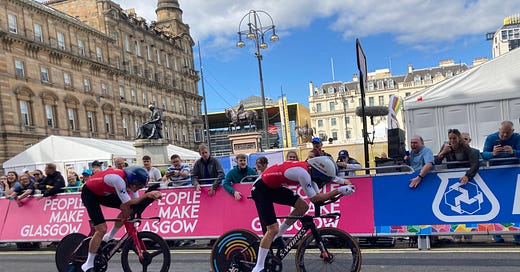Where a road race’s script can be at least partially indicated by the positioning of riders on the road, a Time Trial is considerably less useful. Only a vague sense of relative strength or weakness can be immediately ascertained. The progressive measurement of each rider only gains a well-rounded objective opinion when the race is ultimately complete, …
Keep reading with a 7-day free trial
Subscribe to derailleur to keep reading this post and get 7 days of free access to the full post archives.



